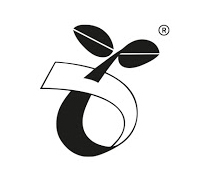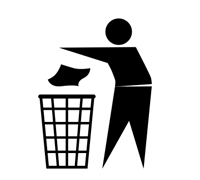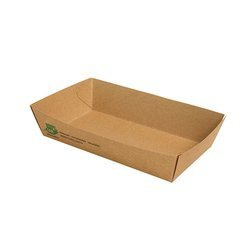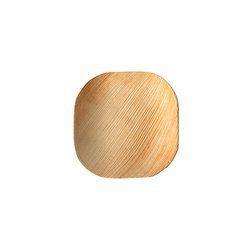Environmental labels on packaging - a guide

Eco-labels on packaging are now part of many products that consumers can reach for. It is the eco symbols that often have a decisive influence on the customer's choice. We can find many eco-marks on the market, but their meaning is not fully known to everyone. Therefore, today we come to you with a comprehensive guide to the most important eco signs.
What are eco signs?
Eco-labels (eco-marks, eco-symbols) are ecological signs that are intended to inform the customer that a product has been made with care for the environment and that there was no contamination of the soil, air or water during its production. The eco-label also informs us that the entire cycle of a product's existence - from its creation, to its use, to its final processing - is environmentally friendly. The eco-label is awarded by the government administration and public or private consumer organizations and associations. Poland's official eco-label is the EKO-ZNAK, awarded since 1998 by the Polish Center for Testing and Certification. The awarding of the eco-label on products is linked to the fulfillment of specific conditions, which are determined by a staff of experts and scientists who study and check the entire production cycle of the goods.
Eco-label - types
Organic symbols are divided into 3 categories:
- organic food - eco-food,
- organic products - ecoproducts,
- ecological packaging - eco-packaging.
Today we will focus on the latter, i.e. organic packaging. Eco-labels on packaging mean that a product is made of biodegradable, recyclable materials. Any product bearing the eco mark must also meet certain criteria:
- the production process must be environmentally friendly,
- reducing energy consumption at each stage of the production process,
- production of goods from non-toxic raw materials,
- products are not tested on animals,
- packaging can be reused.
How to read ecological symbols?
In order for an eco sign to fulfill its function, you need a high level of environmental awareness among customers and the ability to read ecological symbols. Today we will face this task and introduce you to the most well-known ecological signs.

Biodegradable (compostable) packaging - this eco-label is for packaging that decomposes during composting and does not release harmful substances. Eco-labels on packaging mean that the products they contain are fully biodegradable and can be composted with organic waste. This label is awarded by DIN CERTCO (German Institute for Standardization). The vast majority of products in our store have this designation - so when you buy from SlowPack - you are not harming the environment.

Reusability - this eco mark eco appears on reusable packaging. The eco-mark on such packaging signals that the product does not become waste and can be reused for the same purpose at least twice. The ecolabel can be found on boxes, barrels, canisters, as well as bottles and other glass containers, among others.

Recyclable packaging - these ecological symbols are commonly referred to as "recycling." This type of eco-label is for packaging that can be recycled and produced from the recovered raw materials of another or similar product (e.g. paper - bags, packaging boards, box fillers). Inside a loop made up of arrows, this eco-mark contains a number that indicates what material was used to produce the packaging in question. We will prepare more information about these numbers soon :)

Take care of cleanliness. Put in the trash. - this eco-mark on packaging is intended to remind consumers to put the packaging after the used product in the trash bin.

Euro leaf - is an eco-mark awarded by the European Commission for organic products in the European Union. This ecological symbol is located obligatorily on all pre-packaged organic products, produced in one of the member states and implementing the applicable Community standards. It does not apply to products imported from outside the Union. The Euro leaf depicts the stars of the European Union arranged in the shape of a leaf on a green background. The eco sign contains two clear messages: nature and Europe.

The green dot mark - is one of the most common and most common eco-labels, which informs the consumer that a recycling fee has already been paid for the packaging, directed to the national packaging recovery organization. The green dot mark is owned by Duales System Deutschland A.G. (DSD), based in Cologne, and is its registered trademark. As an interesting aside, it is worth mentioning that the green dot mark is placed on some 460 billion packages worldwide each year.

The FSC eco mark can be found on products of the wood, furniture or paper industries. The name derives from the Forest Stewardship Council (FSC), which aims to promote environmentally friendly, pro-social forest management while bringing economic benefits. The FSC label guarantees that the wood used in production has been harvested in harmony with the environment, respecting the rights of local people, and has not reduced the economic potential of forest management.

Not tested on animals - is one of the eco-labels used to mark products not tested on animals, and this eco-label is most often used by cosmetics manufacturers. Interestingly, companies themselves decide that the said eco-label will appear on the product. Whether the information is true should be verified by consumer organizations.

ECOLABEL - also known as "Daisy" or "Margerite" ecological marks. This is an official eco-label, given to products that meet the requirements agreed upon by European Union member states. Receiving this eco-label is equivalent to meeting the strictest environmental standards. The Ecolabel symbol of ecology is awarded in 24 categories, which include household appliances, detergents, textiles and paper, among others.

In Care of Nature - such eco-labels on packaging signify their waste recovery and recycling system. The "In Care of Nature" eco-label is confirmation of participation in the program of the same name and testifies to cooperation with the recovery organization Polski System Recyklingu SA. Such eco-labels say that the company strives to minimize environmental pollution at every stage - production, operation and waste management. It also participates in educational, informational and lobbying activities.
It is worthwhile to reach for products with eco-labels on them. First of all, because goods with an eco-label are environmentally friendly at every stage of their "life" - from the production cycle to disposal. In addition, where eco-labels are placed on packaging, it is possible to see the stages of production. We encourage you to pay attention to the labels. We hope it will be easier with our guide!
You will find plenty of products with the Compostable or FSC label.
Recommended


